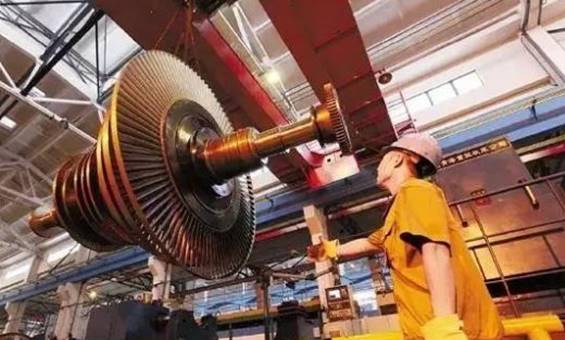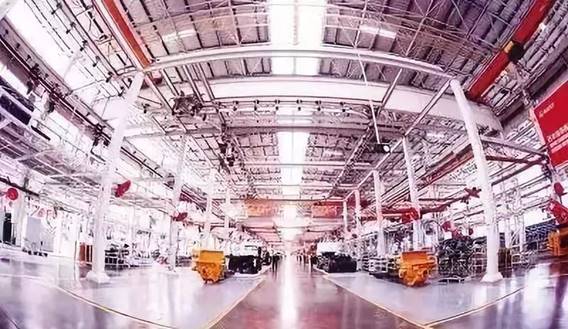Rigid production, reflected in the large-scale production of products, meets the social demand for a large number of industrial products. With the upgrading of consumption structure, the buyer's market and consumers' personalized, customized and timeliness requirements are pressing step by step to meet the flexible production of & lt; diversified, small-scale and cycle controllable & gt;, and the < a (?) = / word / 312077. ASPX "style =" text-d " ecoration:underline;color : Blue "title =" flexible manufacturing "> flexible manufacturing < / a > is the key to the survival and success of enterprises in the future.
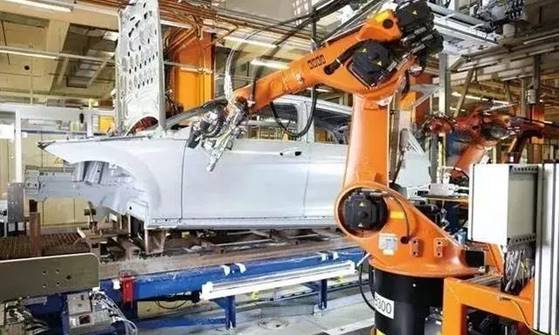
< strong > < br / > I. Development Status of flexible manufacturing technology Flexible manufacturing technology is the sum of all kinds of technologies to realize programmed flexible manufacturing for different shape machining objects. Flexible manufacturing technology is a technology intensive technology group. We believe that flexible manufacturing technology, which is suitable for multi variety, small and medium batch (including single product) and focuses on flexibility, belongs to flexible manufacturing technology. At present, according to the scale, it can be divided into: < br / > 1. Flexible manufacturing system (FMS). Generally, it includes 4 or more fully automatic < a ecoration:underline;color : Blue "title =" CNC machine tool "> CNC machine tool < / a > (machining center and turning center, etc.), which is connected by centralized control system and material handling system, can realize multi variety, small and medium batch processing and management without stopping the machine.
2. Flexible manufacturing cell (FMC). FMC came out and was used in production about 6-8 years later than FMS. It is composed of 1-2 machining centers, < a (?) = / word / 312076. ASPX "style =" text-d " ecoration:underline;color It is composed of: Blue "title =" industrial robot "> industrial robot < / a >, numerical control machine tool and material transportation and storage equipment, which has the flexibility to process a variety of products. FMC can be regarded as the smallest FMS. It is a product of the development of FMS towards low cost and miniaturization. It is characterized by the realization of single machine flexibility and automation. So far, it has entered the stage of popularization and application.
3. Flexible manufacturing line (FML). It is a production line between a single or small batch non flexible automatic line and a small batch multi variety FMS. The processing equipment can be general machining center, CNC machine tool, or special machine tool or NC special machine tool. The requirement for flexibility of material handling system is lower than that of FMS, but the productivity is higher. It is represented by the flexible manufacturing system in the discrete production and the distributed control system (DCS) in the continuous production process. Its characteristic is to realize the flexibility and automation of the production line. Its technology has become increasingly mature and has entered the practical stage so far.
4. Flexible manufacturing plant (FMF). FMF is a complete FMS that connects multiple FMS together with an automated warehouse and connects them with a computer system, from order, design, processing, assembly, inspection, delivery to delivery. It includes CAD / CAM, and makes CIMS put into practice to realize the flexibility and automation of production system, so as to realize the whole process of production management, product processing and material storage and transportation in the whole plant. FMF is the highest level of automatic production, reflecting the most advanced automation application technology in the world. It integrates the automation of manufacturing, product development and business management as a whole, represented by the intelligent manufacturing system (IMS) with information flow controlling material flow. Its characteristic is to realize the flexibility and automation of the factory.
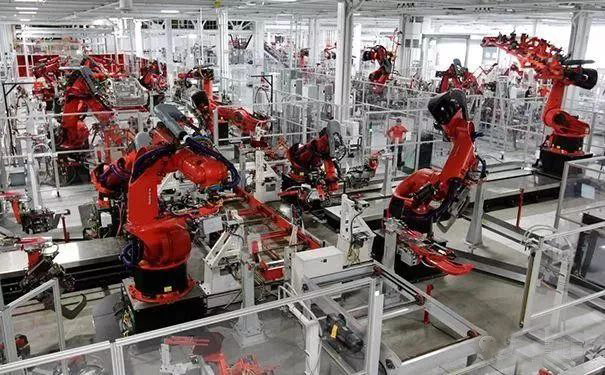
Second, the significance of the development of "flexible manufacturing" in manufacturing enterprises The fundamental characteristics of flexible manufacturing determine that it has a strong ability to adapt to the changes of manufacturing responsibilities and production planning environment. Therefore, the implementation of flexible manufacturing in China's manufacturing enterprises is of great significance: < br / > Flexible manufacturing is the mainstream and fundamental of modern production methods. Increasingly fierce market competition and increasing production skills promote the continuous innovation of production methods of contemporary enterprises, such as timed production, lean production, concurrent engineering, smart manufacturing, bionic manufacturing, green manufacturing, manufacturing resource planning, supply chain management, etc. All of these advanced production methods are & lt; flexible & gt; As its starting point and fundamental, for example, the fundamental condition of lean production is to produce high-quality products according to the needs of users; smart manufacturing and fake manufacturing both exaggerate the requirements of rapid and appropriate changes; concurrent engineering considers the suitability requirements of manufacturing, selling and handling process in the product planning and opening stage; and manufacturing resource planning and supply chain management are the key points From the scope of the whole production chain to achieve a broader, higher flexibility.
Flexible manufacturing is the strongest support to meet the natural and diversified needs of consumers. In the past, in the seller's market environment where supply should not be demanded, manufacturing enterprises did not need to think about the requirements of consumers for their products, but they could only buy what they produced. Today, consumers have become the dominant market. What they need is not only the forced standardized products, but also the unprecedented non standardized products. This will lead to a large number of similar specifications of the loss market, fission into a series of market segments to meet different needs, and further deepen the diversification of products. This makes the form of market competition from the capital and cost based competition to the market appropriate ability, new product promotion speed, product nature and other aspects of competition, which objectively needs the support of flexible manufacturing system.
Flexible manufacturing is an effective way to reduce production capital and improve economic efficiency. As flexible manufacturing is an intelligent production method, it integrates high technology into manufacturing configuration and products to realize hard configuration and soft configuration; In addition, flexible manufacturing is a kind of market-oriented production method, which requires manufacturers and customers to perform interactive information exchange, regularly control customers' demand information for related products, and seriously construct according to customers' wishes and requirements Therefore, it can eliminate the uncertainty of manufacturers' production, and at the same time, it can prevent the appearance of rivalry between manufacturers due to too much competition, so as to reduce the losses of manufacturers and improve economic benefits.
The flexible manufacturing is an important way to improve the manufacturing ability and narrow the gap with the international advanced manufacturing level. Since the reform bloomed, China has grown into a big manufacturing country, but there is a big gap from the international level of manufacturing progress. Taking Zhejiang Province as an example, the labor productivity of Zhejiang's manufacturing industry is only $6568, less than one tenth of that of the United States, Japan and Germany in the mid-1990s, and lower than that of Malaysia and Indonesia in the past. In 2002, the growth rate of Zhejiang's manufacturing industry was only 23.2%, which was 18-25 percentage points lower than that of the United States, Japan, Germany and South Korea, and was equivalent to that of Malaysia. These differences are obviously due to the low level of manufacturing skills and the relatively poor quality of employees. The implementation of "flexible manufacturing" will help to improve the production allocation skills and the quality of employees in China's manufacturing industry, promote the optimization of the existing manufacturing industry's property layout, talent structure and skills layout, and comprehensively promote the manufacturing skills, so as to narrow the gap with the international advanced manufacturing level.
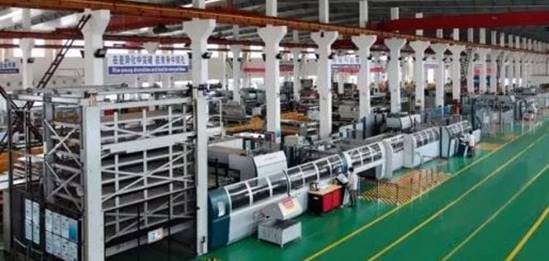
< strong > 3. Flexible manufacturing production cases < / strong > < br / > The Internet plus has brought about tremendous changes to supply chain management, enabling customization and flexible production to everfount into manufacturing, or even “ zero inventory &rdquo.
< strong > steam turbines can also be & lt; built with building blocks & gt; < br / > In the field of high-end equipment manufacturing, steam turbine is known as the "crown" of equipment manufacturing industry;.
At present, Hangzhou steam turbine has established a set of supply chain management system based on Internet, covering all production information, raw materials and parts partners. Raw material procurement, parts procurement and production material management have all realized Internet. This greatly improves the efficiency of front-end management and back-end management of processing and production, which is totally different from the previous manual operation mode. The original turnover time of four or five days only takes a few minutes to complete.
Order production is the production characteristic of large equipment manufacturing industry such as steam turbine. In the process of implementing personalized customization for customers, can we realize skid mounted fast installation like building blocks, and reduce the cost of manpower and material resources? From the perspective of users, Zhongneng steam turbine power Co., Ltd. of Hangzhou Steam Turbine Group has launched a skid mounted fast installation project for smaller steam turbines, which greatly improves the competitiveness of product services. Last year, the company successively received orders for 10 sets, realizing a profit increase of 5 million yuan. Among them, the company won 5 orders for ferronickel smelting project in Indonesia at one stroke, and successfully undertook 2 palm oil projects in Indonesia for the first time, occupying a place in the field originally dominated by Japanese products, which made the industry look at it with new eyes.
In the face of the new normal economy, especially the equipment manufacturing industry is facing the market platform period, management innovation, cost control and efficiency, it is particularly important. Hangzhou Steam Turbine's intelligent manufacturing transformation is also included in the provincial demonstration project. After upgrading, the whole process of processing and production will be digitized, and electronic data transmission will be realized from R & D, production, circulation and other links, which will not only make the supply chain management more accurate and efficient, but also further improve the quality control.
